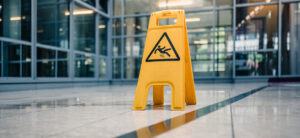
Slip-and-fall accidents are more common than you might think, often leading to severe injuries that can disrupt lives. Whether they happen in public spaces, parking lots, private homes, or businesses, these incidents can have significant legal implications. If you’ve been injured in a slip-and-fall accident, understanding the laws in Massachusetts can help you navigate your case.
Massachusetts Laws on Slip-and-Fall Claims
Under Massachusetts law, property owners—whether residential or commercial—are required to maintain safe premises. This means addressing hazards that could pose a risk to lawful visitors. When they fail to do so, they may be held accountable under premises liability law. Slip-and-fall cases fall under this category, focusing on whether the property owner acted reasonably to prevent harm.
What Do You Need to Prove in a Slip-and-Fall Case?
For a successful slip-and-fall claim, you need to show:
- A hazardous condition existed: This could be anything from an icy sidewalk to a wet floor.
- The condition was present before your injury: Evidence must establish that the hazard wasn’t a sudden or unexpected occurrence.
- The property owner knew—or should have known—about the condition: Even if the owner wasn’t directly aware of the hazard, they might still be liable if they failed to discover and fix it in a reasonable timeframe.
Courts assess factors like how long the hazard existed and whether it was obvious or widespread enough for the property owner to notice and fix.
Common Causes of Slip-and-Fall Accidents
While every case is unique, these are some frequent causes:
- Wet or Slippery Floors: Spills of liquids like water, oil, or cleaning solutions. Recently mopped or waxed floors without proper warning signs.
- Uneven Surfaces: Cracked sidewalks, potholes, or uneven pavement. Loose floorboards, tiles, or carpets.
- Poor Lighting: Dim or insufficient lighting in hallways, staircases, or outdoor areas. Burned-out or missing light bulbs.
- Cluttered Walkways: Obstructions like cables, boxes, or personal belongings left on the floor. Items fallen from shelves or displays.
- Weather-Related Hazards: Snow and ice buildup on sidewalks, steps, or parking lots. Wet entryways caused by rain or melting snow.
- Defective or Missing Handrails: Broken or loose railings on stairs or ramps. Lack of handrails in areas where they are needed.
- Improper Footwear: Shoes with worn-out soles or inadequate grip for the environment.
- Construction or Maintenance Hazards: Debris, tools, or materials left on the ground. Temporary flooring or scaffolding not properly secured.
- Sloped or Unstable Surfaces: Sloping floors, loose rugs, or surfaces that are uneven or unstable.
- Obstructed Vision: Items or displays that block the view of potential hazards.
Each of these hazards can lead to serious injuries, from fractures to head trauma. Understanding these risks can help prevent accidents—or strengthen your case if one occurs.
If you or a loved one has been involved in a slip-and-fall accident, the experienced attorneys at SUGARMAN are here to help. If you would like to speak to an attorney, please call us at (617) 542-1000, email us at , or fill out our contact form.
